$0.00
No products in the cart.
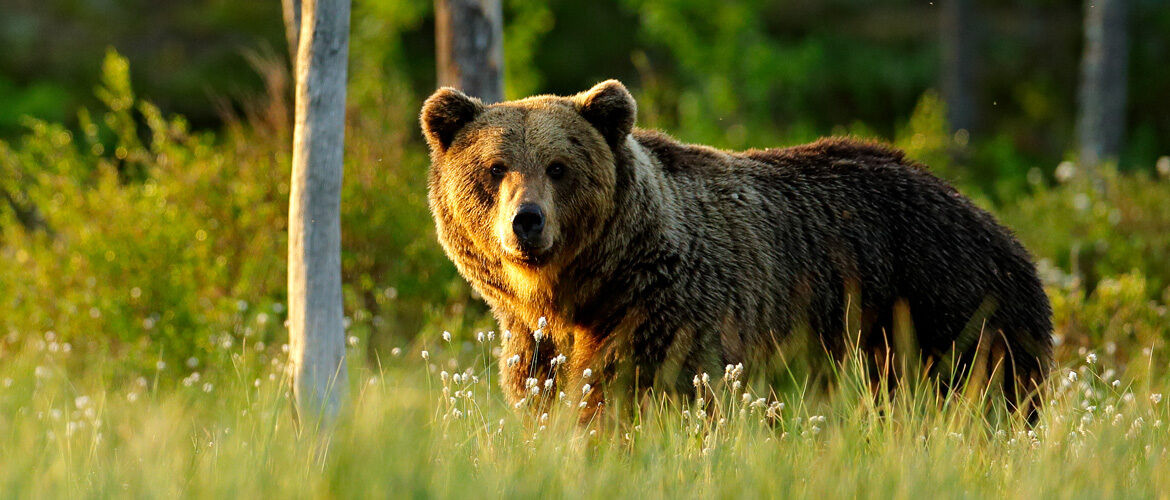
Bears are the youngest of the carnivore families, having arisen from doglike ancestors and are carnivoran mammals of the family Ursidae. They are classified as carnivorans, which is referred to as caniforms. Although there are only eight species of bear’s existence, they are widespread, appearing in a wide variety of habitats throughout the Northern Hemisphere and partially in the Southern Hemisphere. Bears are found on the continents of North America, South America, Europe, and Asia.
The family Ursidae is one of nine families in the suborder Caniformia. Caniformia is a monophyletic order of placental mammals consisting of the most recent common ancestor of all cat-like and dog-like animals, and all descendants of that ancestor. Members of this group are formally referred to as carnivorans, and have evolved to specialize in eating flesh. The order is the fifth largest order of mammals, comprising at least 279 species or “doglike” carnivorans, within the order Carnivora. Bears’ closest living relatives are the pinnipeds (seals), canids (family of dog-like carnivores), and mustelid’s (Wesley-Hunt, G.D.; Flynn, J.J.). Most interestingly, although many animals carry the name “bears” in some languages, they are not bears in a true sense. For instance, red pandas, raccoons and their close relatives are not bears, but rather mustelid’s. Similarly, it is worth noting that although Koala “Bears” exist in Australia, they are not actually a bear, but rather a marsupial. The Koala is a Native, protected species and although not related to the bear they too were exploited for commercial gain from the early 1800s into the 1920s for fur products, until eventually gaining a protected species status in 1937.
Modern bears comprise eight species in three subfamilies: Ailuropodinae (monotypic with the giant panda), Tremarctinae (monotypic with the spectacled bear), and Ursinae (containing six species divided into one to three genera, depending on the authority). Nuclear chromosome analysis show that the karyotype of the six ursine bears is nearly identical, each having seventy four chromosomes (see Ursid hybrid), whereas the giant panda has forty two chromosomes and the spectacled bear having fifty two.
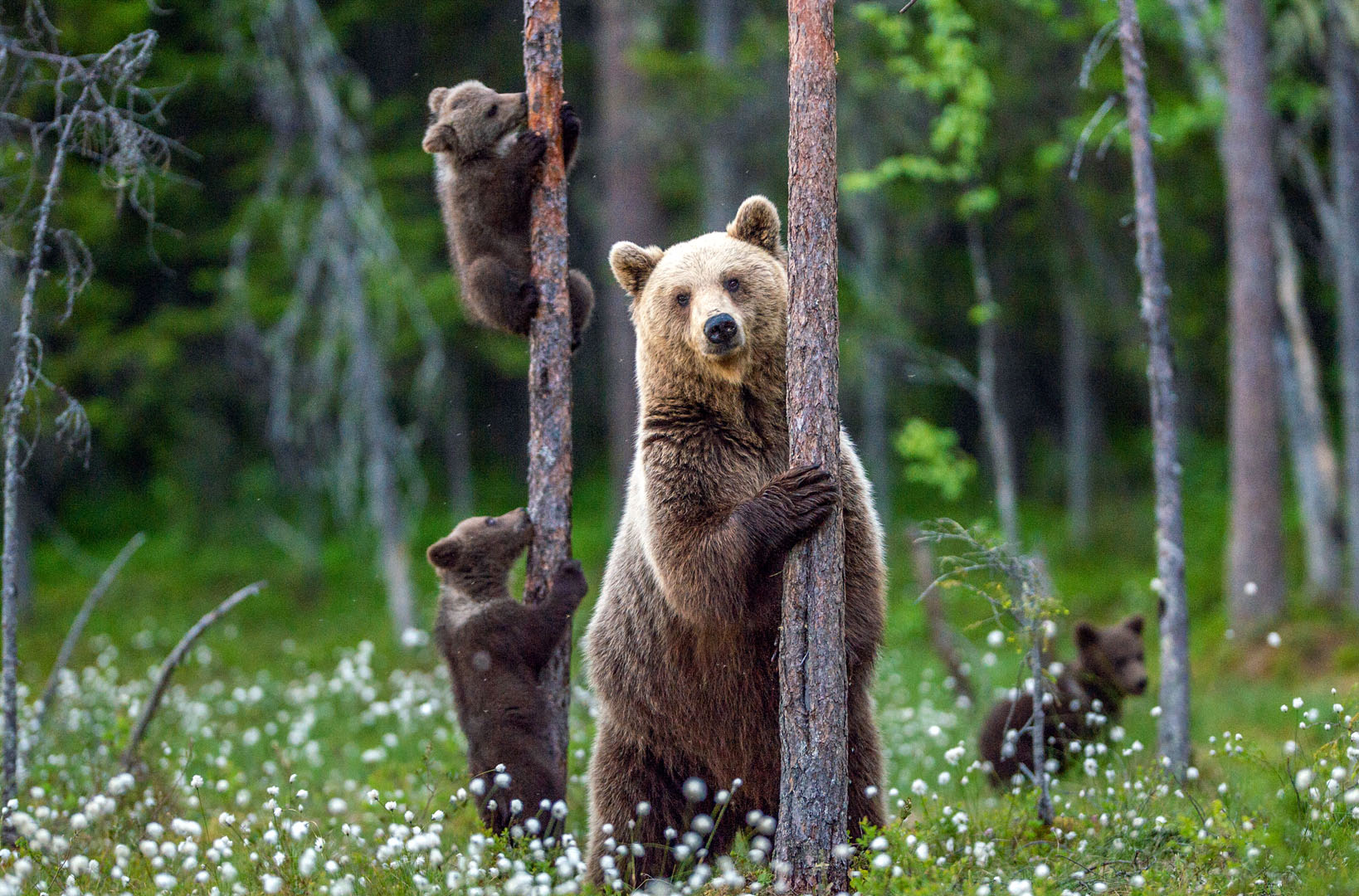
The bear species as a whole referred to as ‘modern’ due to having evolved to its current form from doglike ancestors during the Eocene Epoch 55 million to 38 million years ago. The earliest bears had the characteristics of both dogs and bears, with heavy-set features and much teeth that were much duller than those of true dogs. Modern bears appeared in Eurasia around 5 million years ago during the late Miocene Epoch. These bears were relatively small animals, but some types eventually grew larger. They diversified and spread through Europe, Asia, and North America, eventually reaching South America. Fossils indicate that bears once lived in Africa as well, with one large primitive species found as far south as present-day South Africa (bears.org).
Common characteristics of modern bears include large bodies with stocky legs, long snouts, small rounded ears, shaggy hair, plantigrade (meaning an animal that walks with the toes and metatarsals flat on the ground) paws with five non-retractile claws, and short tails.
The bear family includes some of the largest terrestrial members of the order Carnivora still in existence. The polar bear is considered to be the largest with adult males weighing three hundred and fifty to seven hundred kilogram and measuring between 2.4 – 3 metres in total length. Whereas, the smallest species is the sun bear, which ranges between twenty five and sixty five kilograms in weight and 1 –1.4 meters in length. For comparison sake, the prehistoric North and South American short-faced bears were the largest species known to have lived. The later estimated to have weighed sixteen hundred kilograms and stood 3.4 meters tall. The body weight of bears will vary throughout the year, especially in bears of temperate and arctic climates, as they build up fat reserves in the summer and autumn and lose weight during the winter (Mammal Anatomy: An Illustrated Guide. Marshall Cavendish).
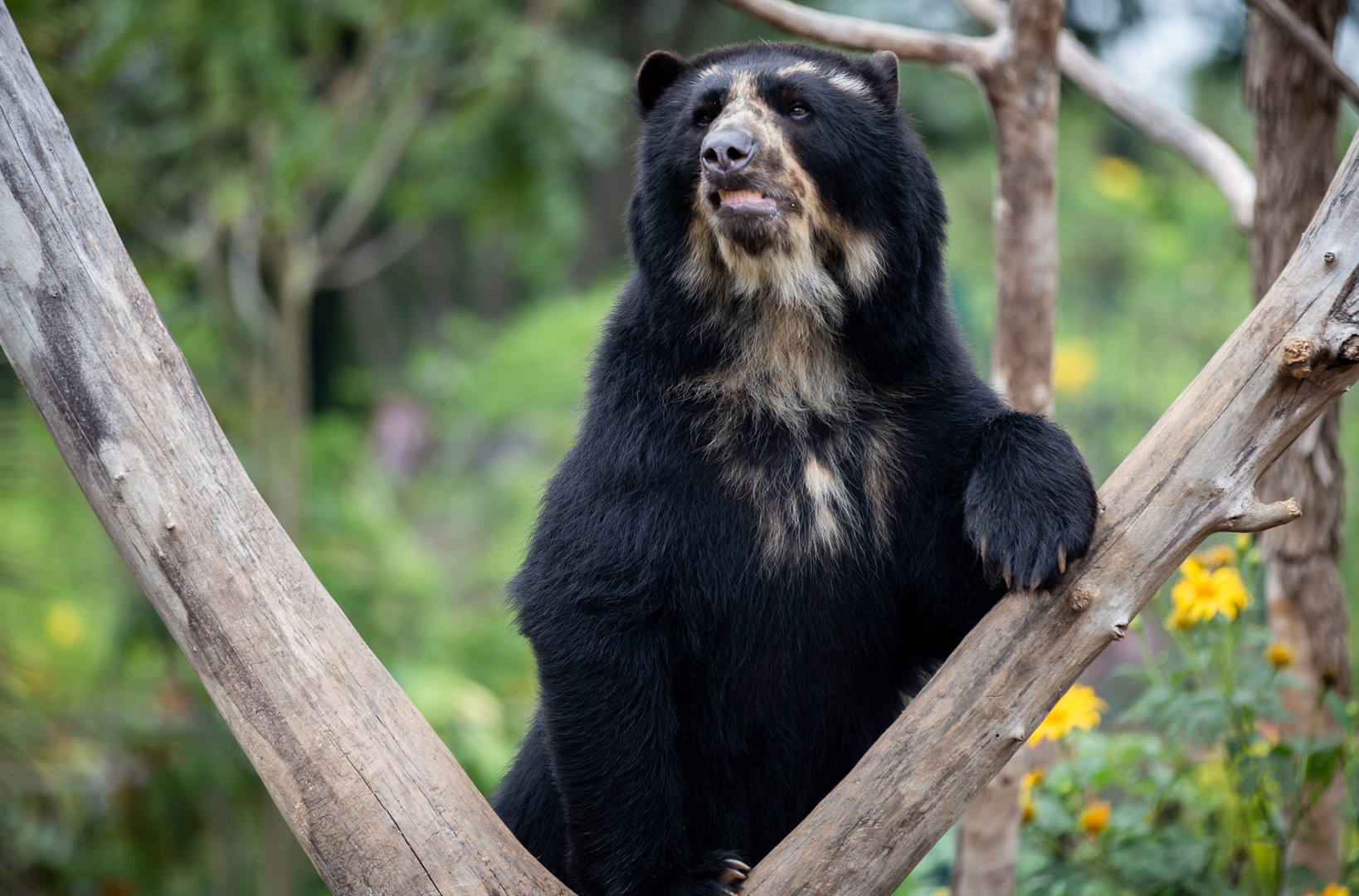
Bears are sexually dimorphic with regard to size, meaning a difference occurs in size between males and females with males typically being larger. Larger bear species tend to show increased levels of sexual dimorphism in comparison to smaller species (Hunt, R. M. Jr. (1998). “Ursidae”).
Relying on strength rather than speed, bears have relatively short limbs with thick bones. This allows them to harness speed over a short distance and then exert force when finally required. Although, generally considered slow runners over distance, compared to humans, bears excel.
The shoulder blades and the pelvis are correspondingly large and the limbs are straight. The strong forelimbs are used to catch prey, to excavate dens, to dig out burrowing animals, to turn over rocks and logs to locate prey, and most interestingly to club large animals.
The bear overall is an adapt survivalist. Etching a living from some of the most seemingly inhospitable environments from the icy Pole to the warmest climates. In this survival, the bear has adapted its diet accordingly, such as the polar bear for example is mostly carnivorous, however the giant panda feeds almost entirely on bamboo and the remaining species being omnivorous, meaning, somewhere in-between.
With the exception of courting individuals and mothers with their young, bears are typically solitary animals. The mating system of bears has variously been described as a form of polygyny, promiscuity and serial monogamy ( “Ursus americanus” Mammalian Species). During the breeding season, males take notice of females in their vicinity and females become more tolerant of males. A male bear may visit a female continuously over a period of several days or weeks, depending on the species, to test her reproductive state. During this time period, males try to prevent rivals from interacting with their mate. Courtship may be brief, although in some Asian species, courting pairs may engage in wrestling, hugging, mock fighting and vocalizing. Ovulation is induced by mating, which can last up to 30 minutes depending on the species (Ward & Kynaston 1995).
Gestation typically lasts 6 – 9 months, including a period of delayed implantation, and litter size numbers up to four cubs (Ward & Kynaston 1995).
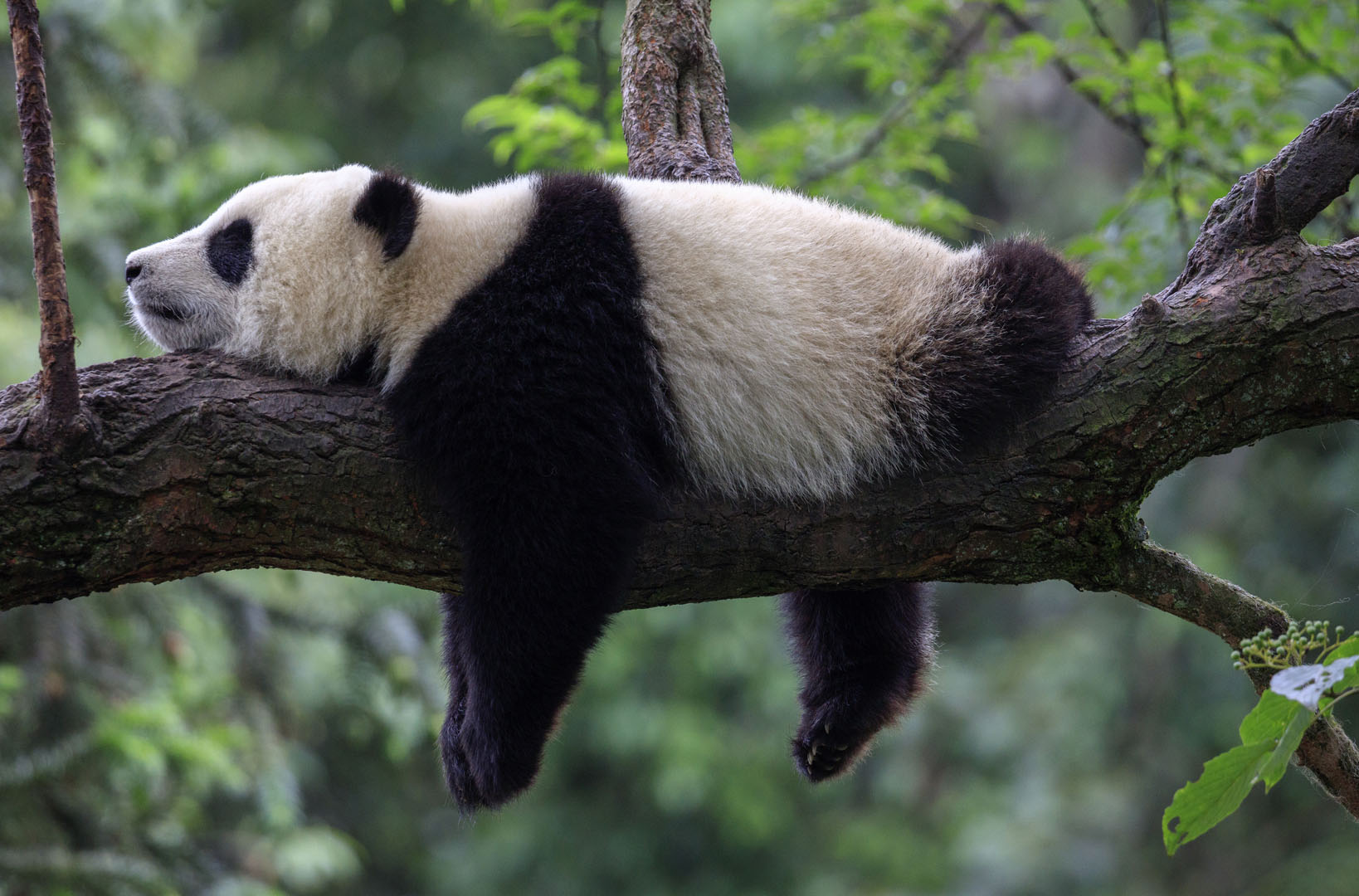
Giant pandas may give birth to twins but they can only suckle one young and the other is left to die. In northern living species, birth takes place during winter dormancy. Cubs are born blind and helpless with at most a thin layer of hair, relying on their mother for warmth. The milk of the female bear is rich in fat and antibodies and cubs may suckle for up to a year after they are born. By 2–3 months, cubs can follow their mother outside the den. They usually follow her on foot, but sloth bear (Melursus ursinus) cubs may ride on their mother’s back. Male bears play no role in raising young. In fact, an adult male may kill cubs, which has been recorded in polar bears, brown bears and American black bears but not in other species. The male will kill young to bring the female into estrus.
Most bears, are diurnal (mostly nocturnal) however seasons will dictate this and they of course have an excellent sense of smell but rather poor eyesight, generally speaking.
Despite their heavy build and awkward gait, bears are agile, they are adept runners, climbers, and swimmers.
Bears, particularly those that experience harsh seasonal changes will hibernate. Bears use shelters, such as caves and logs or other similar styles of protection from the elements, as their dens; and most species occupy their dens during the winter for a long period of hibernation, which can last up to 100 days in which time they will not eat. However, prior to this period for hibernating species, weight gain is important as it provides nourishment during winter dormancy. As an example, a brown bear can eat up to 41 kilograms of food and gain 2 – 3 kilograms of fat a day prior to entering its den (Ward & Kynaston, 1995).
Bears are prolific scavengers and kleptoparasites, essentially meaning, as well as hunting themselves, they will steal food caches from rodents, and carcasses from other predators.
As far as hunting goes, the sloth bear is not as specialized as polar bears and the panda and has lost several front teeth usually seen in bears in favour of a developed long, suctioning tongue to feed on the ants, termites, and other burrowing insects. At certain times of the year, these insects can make up 90% of their diets (Joshi, Anup; Garshelis, David L.; Smith, James L. D. (1997). “Seasonal and Habitat-Related Diets of Sloth Bears in Nepal”). Some bears, which are typically close to human settings will become addicted to sweet (sic), unnatural type foods which are often found in garbage produced by towns where tourism-related waste is generated throughout the year. Some species may raid the nests of wasps and bees for the honey and immature insects, in spite of stinging from the adults (“What do bears like to eat in a beehive?”). Where access to fish is available, it is an important source of food for some species, and brown bears in particular gather in large numbers at salmon runs. Typically, they will plunges into the water and seizes a fish with its jaws or front paws. The preferred parts to eat are the brain and eggs, being the richest. Small burrowing mammals like rodents may also be dug out and eaten as a part of a varied diet along with vegetation and, where available, berries (Ward & Kynaston 1995).
Most mammals have coloured hair, with each individual hair shaft having bands of colour corresponding to two different types of melanin pigment. Bears however, have a single type of melanin and the hairs have a single colour throughout their length, apart from the tip which is sometimes a different shade. The coat consists of long guard hairs, which form a protective often shaggy covering, and short dense hairs in-between and under which form an insulating layer trapping air close to the skin. The longer hair of the coat helps maintain body heat during winter hibernation and is shed in the spring leaving a shorter summer coat. Polar bears have hollow, translucent guard hairs which gain heat from the sun and conduct it to the dark-coloured skin below. They also have a thick layer of blubber like fat for extra insulation, and the soles of their feet have a dense pad of fur, making them adapt at survival at such low temperatures. While bears tend to be uniform in colour, some species may have markings on the chest or face or in the case of the giant panda, has a bold black-and-white pelage (Ward & Kynaston 1995).
The skulls of bears are massive in relative comparison to most animals, providing anchorage for the powerful jaw muscles. The canine teeth are large but mostly used for display, and the molar teeth flat for crushing. Unlike most other members of the Carnivora, bears have relatively undeveloped carnassial teeth (cheek teeth found in carnivorous animals which allows them to shear flesh and bone), and their teeth are adapted for a diet that includes a significant amount of vegetable matter (Mammal Anatomy: An Illustrated Guide. Marshall Cavendish). Considerable variation occurs in dental formula even within a given species. This may indicate bears are still in the process of evolving from a mainly meat-eating diet to a predominantly herbivorous, whereas polar bears appear to have secondarily re-evolved carnassial-like cheek teeth, as their diets have switched back towards carnivores (Bunnell, Fred (1984). Macdonald, D. (ed.). The Encyclopedia of Mammals).
Bears have small rounded ears so as to minimize heat loss, but neither their hearing nor sight are particularly acute. Unlike many other carnivores they have colour vision, believed to help them distinguish ripe nuts, fruits and berries. They are unique among carnivorans in not having touch-sensitive whiskers on the muzzle; however, they have an excellent sense of smell, better than that of the dog, or possibly any other mammal. They use smell for signalling to each other (either to warn off rivals or detect mates) and for finding food. Smell is the principal sense used by bears to locate most of their food, and they have excellent memories which helps them to relocate places where they have found food before (Mammal Anatomy: An Illustrated Guide).
Today, in relatively modern times bears are found in sixty countries. Mainly the Northern Hemisphere and are also concentrated in Asia, North America, and Europe. An exception is the spectacled bear; native to South America, it inhabits the Andean region (Servheen, C.; Herrero, S.; Peyton, B. (1999). Bears: Status Survey and Conservation Action Plan). While the sun bear‘s range extends below the equator in Southeast Asia. The Atlas bear, a subspecies of the brown bear was distributed in North Africa from Morocco to Libya, and then became extinct around the 1870s.
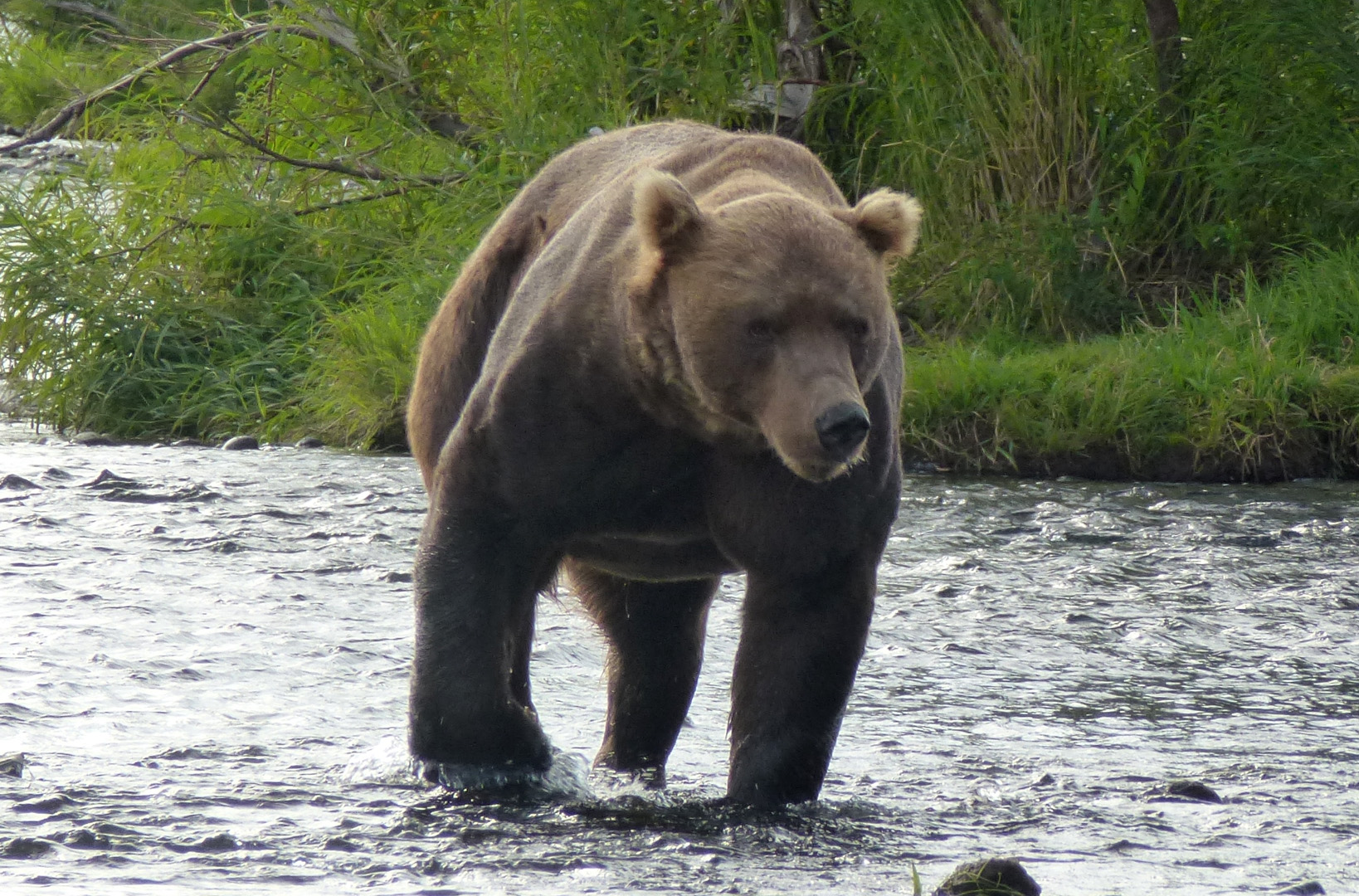
In regards to the evolution, the Giant Short-faced bear from the Pleistocene was the largest land-living mammalian carnivore, it was almost twice as big as today’s brown bear. Unlike modern bears, it was lightly built, with long legs and feet that enabled it to run fast. It was likely a powerful hunter capable of killing large prey. However, recent research suggests it may also have used its size and strength to chase other predators away from their kills. The giant short-faced bear lived in North America during the Pleistocene Epoch, from 1.6 million to 10,000 years ago. The earliest people to reach North America, perhaps as early as 15,000 years ago, may very well have encountered this animal. In more recent times, perhaps the most famous extinct species is the great cave bear, which lived in Europe for several hundred thousand years (during the Middle and Late Pleistocene), it became extinct around 10,000 years ago. Its bones have been found in caves from Spain to the Caucasus. The largest deposit of remains was found in Austria in the Drachenhohle caves where the bones from over 30,000 cave bears had accumulated over many centuries. Distinguished by a large skull and a domed forehead, this bear was as large as the modern Alaskan brown bear. Although, unlike the brown bear, its teeth indicate that it likely ate mostly plant matter. Cave drawings created by Ice Age humans show that they may have occasionally hunted cave bears. For several thousand years the modern brown bear and the cave bear co-existed until the cave bear became extinct. Modern brown bears first appeared in Asia during the Middle Pleistocene Epoch and then spread to North America and Europe, even reaching northern Africa. A population of brown bears that lived along the coast became specialized for hunting seals, eventually evolving into the polar bear around 700,000 years ago (bear.org).
Bears have been popular subjects in art, literature, folklore and mythology. The image of the mother bear was prevalent throughout societies in North America and Eurasia, based on the female’s devotion and protection of her cubs. In many Native American cultures, the bear is a symbol of rebirth because of its hibernation and re-emergence (Ward & Kynaston 1995). A widespread belief among cultures of North America and northern Asia associated bears with shaman; this may be based on the solitary nature of both. Bears have thus been thought to predict the future and shaman were believed to have been capable of transforming into bears (Ward, Paul; Kynaston, Suzanne (1995). Wild Bears of the World).
In a further symbology between animals and humans, Bears were described as being most significant in the lives of Algonquian, Iroquoian, and Northern Athapaskan; cultures for whom this was particularly true include Tlingit, Tsimshian, Kitsumkalum, Gitksan (Gitxsan), Upper Nass River Nishga, Mistissini Cree, Southwestern Chippewa (Anishinabek), Shawnee, Fort Nelson Slave (Dene), Lower Thompson (Denniston G: Sekani. In: Handbook of North American Indians)
Bears were highly valued by the Ahtna of the Copper River Basin, to whom bears were amongst the most important of big game animals. The Natashquan band of Naskapi (Innu) was so renowned for its pursuit of the animal that it was referred to as the “bear hunting people”. Bear was considered a prized food for the Malecite (Maliseet). Round Lake Ojibwa (Anishinabek), Montagnais (Innu) of Quebec, Attawapiskat Cree and Mistissini Cree all relied on bear as a principal source of meat; and most interestingly, the animal was killed throughout the year. Bear was a major food source for Sekani, Inland Tlingit and Kolchan, whose survival during winter depended on the hunting of hibernating bears.
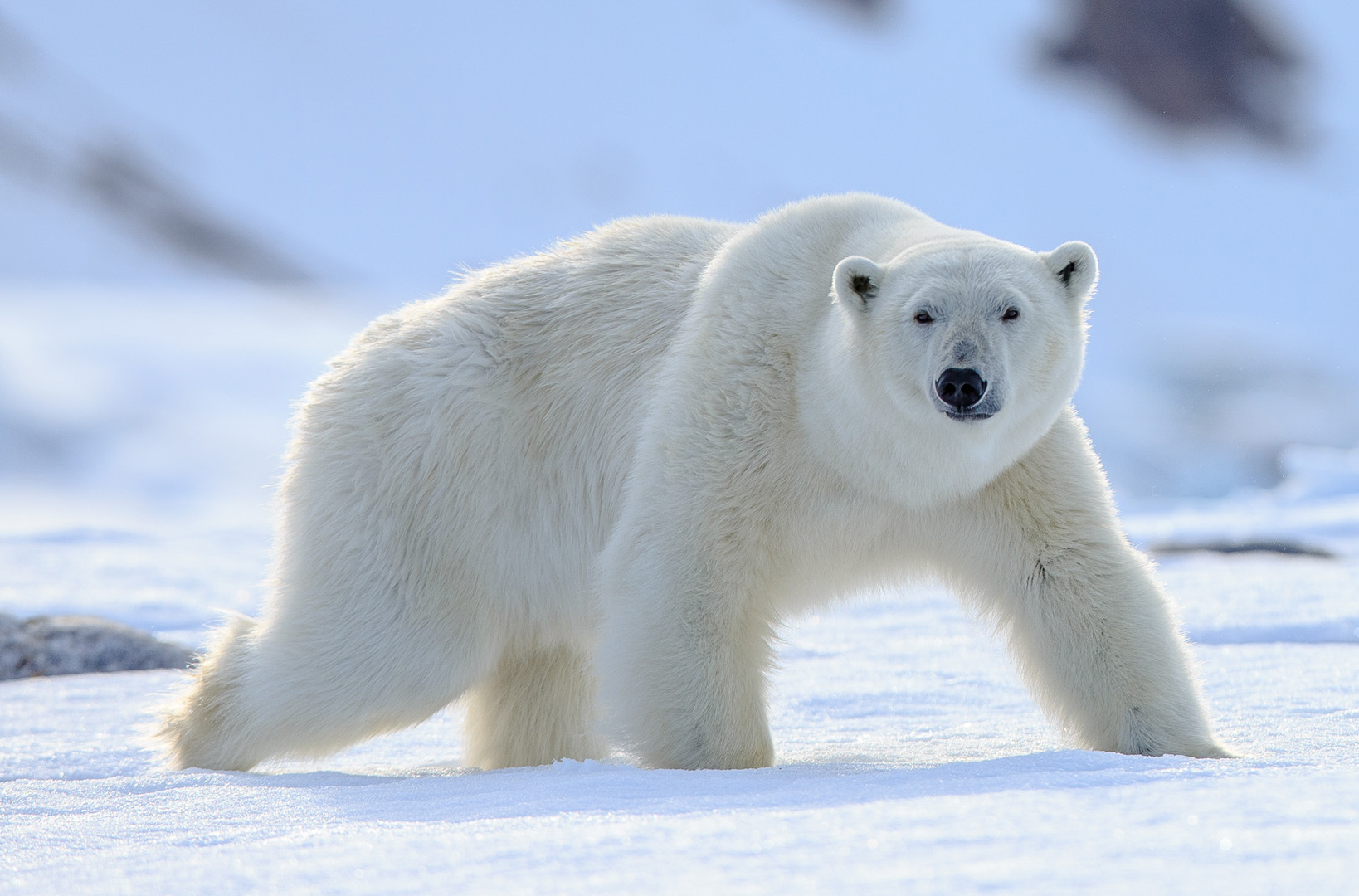
The Inuit of Baffin Land and Hudson Bay, Angeakatille and Ochowjewtil were the groups that guarded the soul of the polar bear. They believed that when a polar bear was killed its soul remained at the kill site of the killing for the three days following its death; the hunters would, according to tradition, leave the bear’s bladder, gall, milt and sweetbreads on a pole for three nights. Further to this, according to Nugumiut custom, if the animal was a male bear, men’s tools such as a drill, knife, file and spear-point, would be left on the pole with the body parts. Likewise, if it was a female bear, women’s tools such as a knife, thimble, cup, skin-stretcher and scraper would be left on the pole for three nights. People would take extreme caution to ensure they did not to break any taboos while the bear’s soul was still present; it was believed that transgressions would be punished.
According to Inuit of Baffin Land and Hudson Bay, when a polar bear was killed it was cut up on site: intestines were given to the dogs and the remainder was taken home. A tradition also noted by Vilhjalmur Stefansson was practiced whereby small objects such as knives, saws and drills were hung up in the hut as gifts to the bear’s soul. Small parts of the bear, including a piece of the tongue, were hung up with the small objects for three days. During the three days, women were also not allowed to comb their hair. Inuit believed that the bear’s soul would tell the other bears how it had been treated so that other bears would be willing to be caught. When the animal’s soul had left after three days, the objects were taken to the passageway of the hut where they were thrown back into the house. Young boys would gather the small objects and return them to their rightful owners (The Eskimo of Baffin Land and Hudson Bay: from notes collected by Capt. George Comer, Capt. James S. Mutch, and Rev. E. J. Peck,)
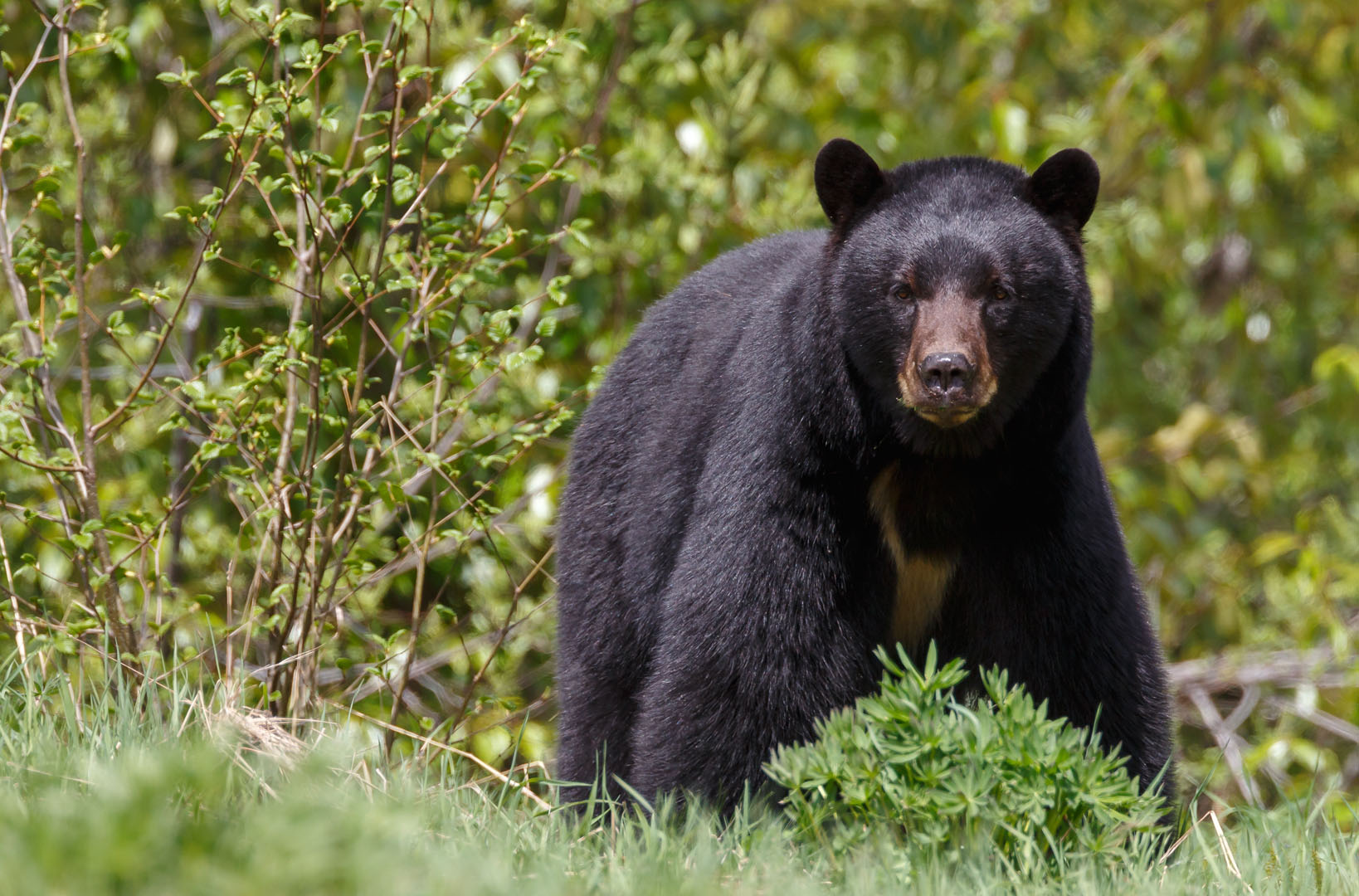
Several bear species can be dangerous to humans, especially in areas where they have become accustomed to people or are likely to cross paths with an unprepared person in a surprise encounter for both parties. Injuries caused by bears are rare, but are widely reported. Bears may attack humans in response to being startled, in defence of young or food, or even for predatory reason. As many animals across time, Bears have been held in captivity for centuries. In that time, their exploitation has been via the use of entertainment by way of spectacle or have been trained to dance, and were kept for baiting in Europe at least since the 16th century. There were five bear-baiting gardens in Southwark, London, at that time; archaeological remains of three of these have survived (“Elizabethan Playhouses and Bear Baiting Arenas Given Protection). Across Europe, nomadic Romani bear handlers called Ursari lived by busking with their bears from the 12th century. In addition to this, Bears have been hunted for sport, food, and folk medicine. For instance, In Cantonese cuisine, bear paws are considered a delicacy and in eastern Asia, the extensive use bears’ body parts and secretions (notably their gallbladders and bile) as part of traditional Chinese medicine.
Today, however many international trade agreements not only prohibit the trade of bear parts in certain countries, they also actively outlaw products made from these by-products, thus pushing the trade into the black market.
Hunting opportunities for bears are extremely varied, from species, to country, landscape and method.
With the aforementioned anthropomorphism, and resultant loss of the Grizzly season in British Columbia the hunting of bears, like many “charismatic” animals is at risk. Opportunities to hunt these animals should be taken sooner rather than later. Of course, opportunities in Alaska, Russia and the Yukon still exist for large Grizz or Brown bears, as do numerous opportunities on Black bears not only across Canada and up into Alaska & the Yukon but also down into the lower 48 States. This includes some fantastic opportunities to hunt black bears under the time honoured tradition with Hounds.